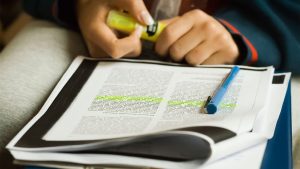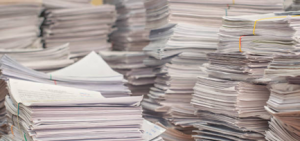PAPER GUIDANCE
Are you ready to submit a paper to a conference? Here are a few helpful tools to get you started on the tabs.
AUTHOR GUIDELINES FOR PROCEEDINGS MANUSCRIPT PREPARATION
- INTRODUCTION
These guidelines are intended to assist you with preparation of your camera-ready proceedings manuscript. CLICK HERE to access the general ANS standards for technical publications. Additional information is provided in the following Sections 2 through 5. A manuscript page is illustrated via the following link: manuscript page
Typing/Formatting instructions are provided in: formatting instructions Section 6 provides information about figures.
- MANUSCRIPT PAPER
If your word processor is capable of using page layouts, you may printout the manuscript on a blank, good quality paper. Otherwise use only the preprinted manuscript mats. These mats are marked with nonreproducible blue margins and graphics rule line guides. All figures and text should appear within the margin guides. There are also spaces for the author’s last name and manuscript page number. Please be sure this information appears on each page of your manuscript. If you require preprinted manuscript mats, contact, ANSHeadquarters c/o Scientific Publications Department 555 N. Kensington Ave, La Grange Park, IL 60525 (708) 352 6611
- MANUSCRIPT SUBMISSION PROCEDURE
Please send your original manuscript along with two copies flat, protected against damage. Upon receipt, manuscripts become the property of ANS and will not be returned to the author(s). Below is the specific instructions for
- NURETH
- ANS Winter Meeting
- National Heat Transfer Conference
- TYPE SPECIFICATIONS
Laser Printers and other high-resolution printers
All type and illustrations should appear within the margins (7″x9″). We recommend 10-point type with 12 points of leading (spacing between lines). Use Times-Roman typeface or equivalent. Single space all text. Double space between paragraphs.
Typewritten manuscripts
If you use type writer, use elite type (12 pitch, or 12 characters per inch). Please do not use pica type (10 characters per inch). Single space the text. Double space between paragraphs. Keep all type within the preprinted margins.
- MANUSCRIPT ALTERATIONS
If you must make a correction to your manuscript after sending it to ANS, send a replacement page to ANS as soon as possible. Include your log number and marked photocopy of the original page showing the exact location of the correction.
- PREPARATION OF CAMERA-READY ILLUSTRATIONS
Figures positioned on the manuscript page will be reproduced full size. Figures should be clear and legible but sized to make economical use of the space. Similar or related figures should be of uniform size with uniform lettering. All figures should be called out in the text as well as properly labeled and captioned.
Line drawings
These should be original black-ink drawings if they are the proper size or reduced or enlarged photographic copies of the original drawings. High-quality photocopies may also be used. Paste line drawings in position on the manuscript. Make all lettering symbols, lines, etc., black and clear.
Photographs
Continuous-tone photographs are reproduced in printed books as halftones. The halftones process converts photographs into a “screened” pattern of black and white dots, giving the appearance of a gray scale. Please do not use photocopies of photographs on the manuscript page. ANS will produce the photographic copy of your glossy photo and paste it in place on your manuscript. Be sure to leave sufficient space for the photo in your manuscript and type the figure caption in position on the manuscript. Enclose original photographs and drawings, clearly labeling each one on the back with your log number, figure number, page number, and the correct “up” orientation of the figure.
Scanned images
Scanned images, e.g., line art, photos, etc., can be used if the output resolution is at least 600 dpi.
Pasting up figures
All illustrations (except those to be inserted by ANS) should be pasted in place on the manuscript. Use rubber cement or pressure-sensitive wax. DO NOT USE CLEAR TAPE (white tape is acceptable). Figures may be pasted within the text near their citations or grouped consecutively at the end of the manuscript.
Review guidelines and acceptance criteria for paper publications in ANS/THD Proceedings
- Objectives of ANS/THD Publication Standards
The Thermal-Hydraulics Division (THD) of ANS accepts for publication in its Proceedings only high-quality, full-length, peer-reviewed technical papers to promulgate definitive results of original research and development, and in-depth critical reviews of the status of research, which are related to the fluid dynamics, thermodynamics and to mass and heat transfer in nuclear facilities.
Paper accepted for the National Heat Transfer Conference, jointly organized by ASME, AIChE and ANS, may present any combination of experimental, analytical or computational research, while papers accepted for the ANS Winter Annual Meeting may also present solutions to current industrial problems, and industrial applications of general interest. All papers published in the Proceedings of ANS Thermal Hydraulic Division must meet the acceptance criteria specified below.
- Requirements of a Review
The review of technical papers is an extremely serious process. Only technical expertise and judgement, and high professional standards brought to bear on the review can assure the publication of high-quality papers.
The reviewer must fill out the REVIEW FORM, which is supplied by the session organizer. The Reviewer’s Comments should consist of General Comments, which assist and advise the Session Organizer or editor, and Specific Comments, which substantiate the General Comments. Where appropriate, the Specific Comments must be referenced in the General Comments.
General Comments
The leading General Comments should summarize the significant contributions of the paper, its strengths and weaknesses, and substantiate the reviewers recommendations regarding acceptance for publication of the paper, as indicated in the Reviewer’s Report on the REVIEW FORM.
Subsequent General Comments should itemize separately,
- Major revisions needed before the paper can be accepted,
- Minor revisions which would improve the quality of the paper, but their implementation is not a condition for acceptance of the paper.
- Errors of spelling or typing, errors in tables and figures, and comments regarding needed corrections in English.
The itemized lists may simply consist of references to Specific Comments.
The General Comment must state whether or not the paper is outstanding and deserves also publication, without further review, in an archival journal (Nuclear Engineering and Design, or Nuclear Science and Engineering). If the reviewer recommends the paper for archival publication, then he must fill out also the ARCHIVAL PUBLICATION FORM, supplied by the session organizer.
Specific Comments
Specific Comments substantiate the General Comments; they should first identify page and line numbers of the respective text in the paper. The comments should be factual and concise; they should contain, where appropriate, specific reference citations and all the information needed by the author(s) to understand the reviewer’s comment.
Superficial and vague reviews cannot be counted to obtain the necessary number of two supportive out of three acceptable reviews. Therefore,
- If paper is deemed too long, state specifically which portion(s) should be shortened or eliminated;
- If the reference citations are incomplete, list the references which should be incorporated or supplemented;
- If the figures cannot be understood without referring to the text, specify what is missing, confusing or redundant;
- If the English is poor, comment specifically on objectionable phrases. Specify at least examples of errors in spelling and typing;
- If the paper is excellent and should be published as is, state your reasons convincingly.
- Paper Acceptance Criteria
- The paper must represent an original work; review papers must present original insights of general interest.
- The paper must be complete, concise and clear. It must have clearly stated objectives, clear descriptions of methods and equipment used, results and conclusions. Related prior work must be acknowledged and the advances made beyond prior work by the author(s) must be stated. References must be specific; specific statements, equations, and results must be cited with page, equation or table number, in addition to author, title, journal or report name and date.
- Papers presenting theoretical or experimental models, or correlations, must state explicitly all implied hypotheses, assumptions, idealizations, limitations, and the range of applicability. Results of theoretical models and of correlations must be compared with experimental results, they must include and uncertainty estimation.
- Papers on experiments must describe the experimental apparatus and procedures used with the detail sufficient for the reader to determine the validity of the results and whether or not the experimental results are applicable under the circumstances outside the author’s test conditions. The presentation of the experimental results must be accompanied by error estimates; where possible, newly presented results should be compared with previously published results.
- Papers presenting solutions to current industrial problems must carefully state all implied idealizations, assumptions and limitations and can cite only publicly accessible references, which can be scrutinized by the reader.
- Papers presenting a new numerical solution method must include all the necessary criteria for estimating the computational error(s) and establishing the validity of the solution.
- Papers presenting the application of known numerical techniques or existing computer codes must include citations to fully scrutable documentation of such techniques or computer codes. The documentation must be published in the open literature and contain all the modeling equations and the algorithms needed in principle to reproduce the presented results. Such applications of existing methods qualify for publication only if complicated problems are solved, where even qualitative understanding is difficult, and only if the author derives from the results new insight of general interest. New design data or design information may be presented also from validated, documented and highly accurate computer codes. All computer code results must include estimates of computational errors.
Papers are disqualified from ANS/THD Proceedings if they:
- do not present the objectives of the paper, a clear statement formulating the problem, nor the methods of solution, nor a statement explaining the relevance and usefulness of the newly presented results.
- present a progress report, describing the solution to a particular problem of no general interest, involving known methods or solutions, or a proprietary computer code.
- present theoretical solutions only in the form of complicated equations that cannot be readily used, that have not been interpreted to offer generally useful insight, or that have not been compared with experimental results.
- present correlations or theoretical results with many adjusted constants, or statistical results, based on only a small number of experiments.
- computer calculations obtained with an incompletely documented code, or code that has not been peer-reviewed.




